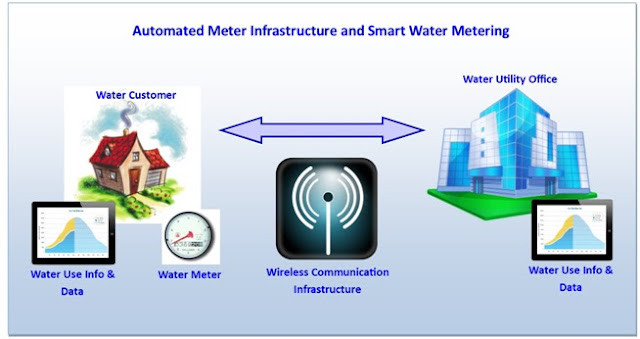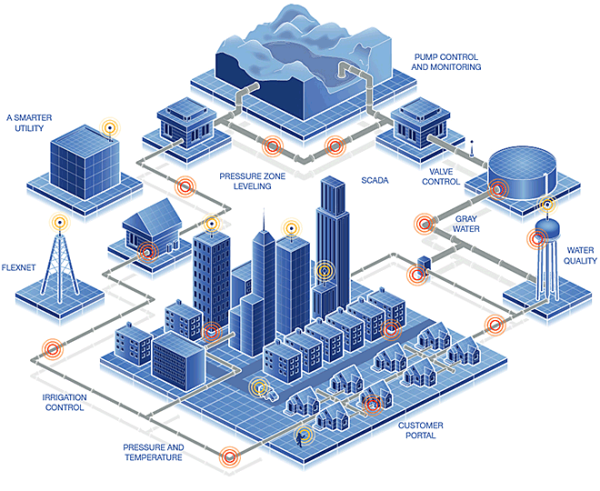Smart
Metering Introduction
A water
meter is a device used to measure the amount of water consumed in a building.
A "smart" water meter is a measuring device that has the
ability to store and transmit consumption data frequently. Sometimes
"smart" meters are referred to as "time-of-use" meters
because in addition to measuring the volume consumed, they also record the date
and time the consumption occurs.
AMI
systems using "smart" water meters are capable of measuring,
collecting, and analyzing water use information and then communicating this
information back to the customer via the internet either on request or on a
fixed schedule. AMI systems include hardware, software, communications,
consumer water use portals and controllers, customer associated systems, Meter
Data Management (MDM) software, and supplier business systems.
Water
utilities are implementing advanced metering infrastructure (AMI) systems as
part of larger “Smart Grid” initiatives that may also including electricity and
natural gas services. AMI extends current advanced meter reading (AMR)
technology by providing two-way meter communications, allowing information and
commands to be sent toward end users for multiple purposes including: Real-time
usage and pricing information, leak and abnormal usage detection, targeted
water efficiency messaging, measuring changes in water use, and even remote
service disconnects.




评论
发表评论